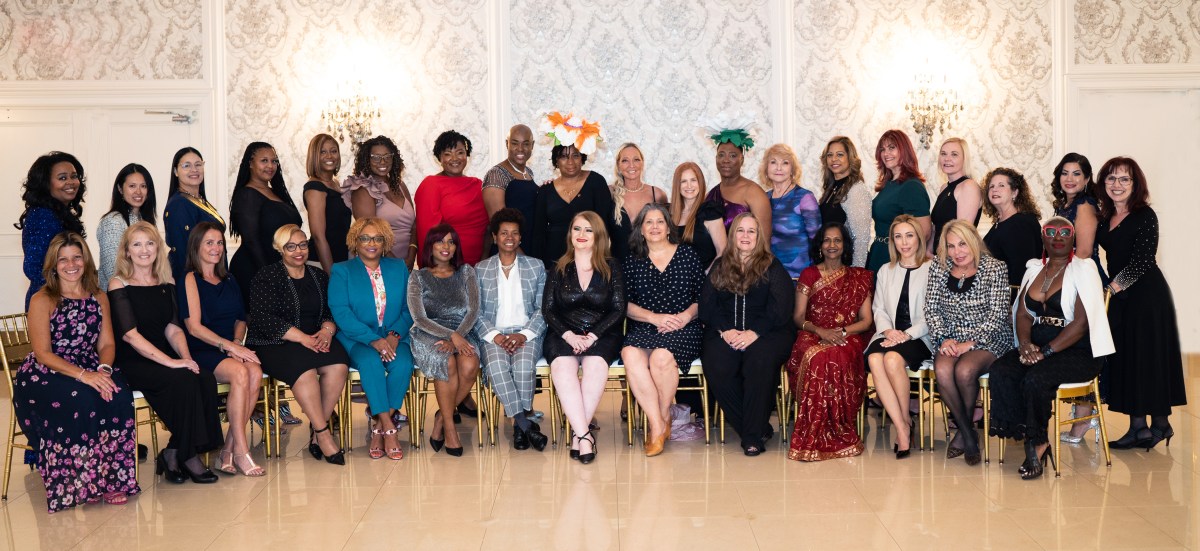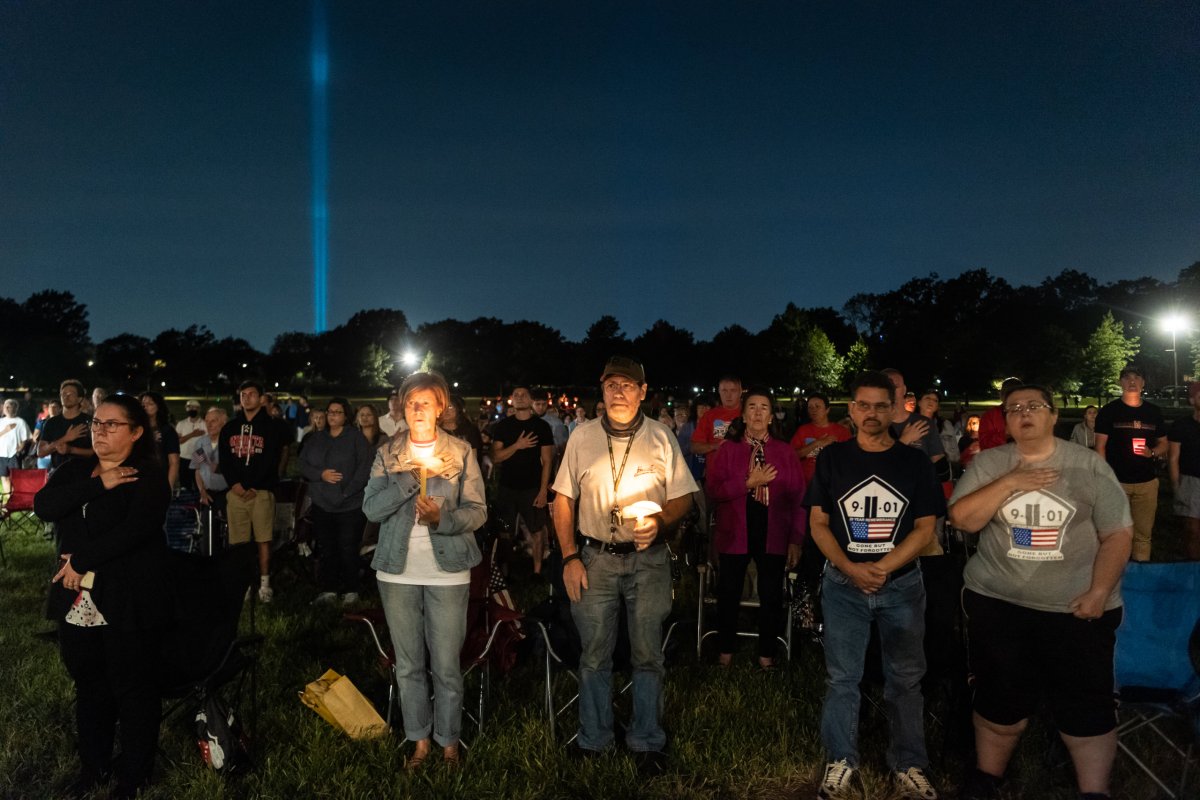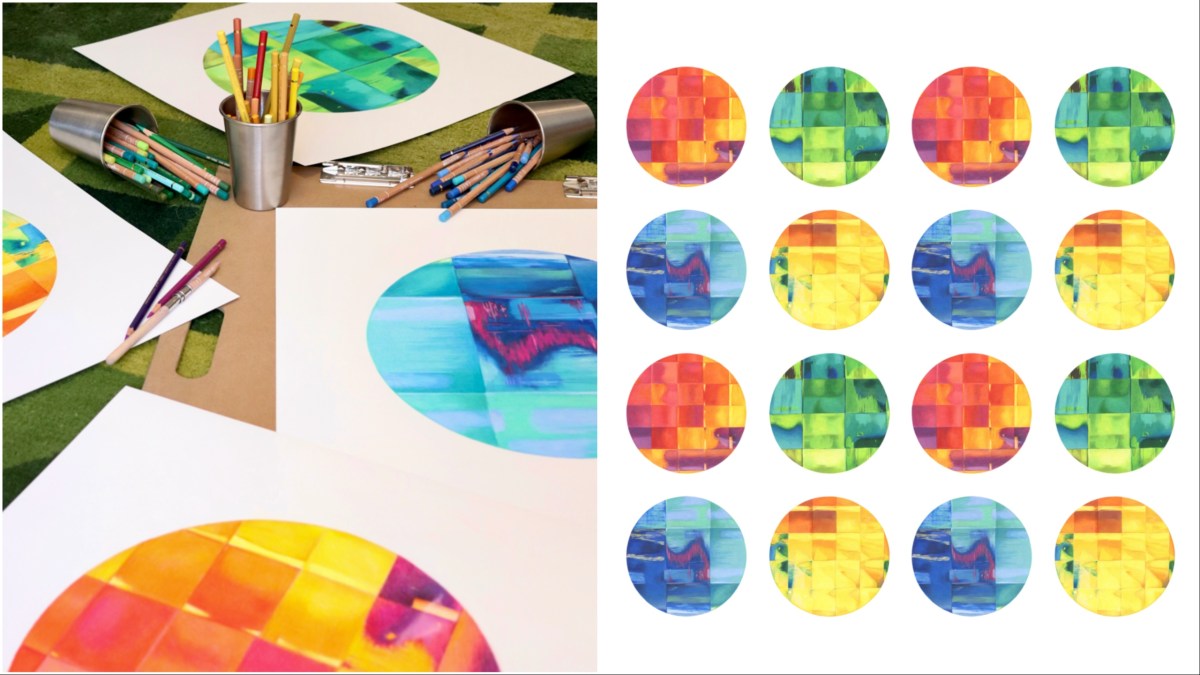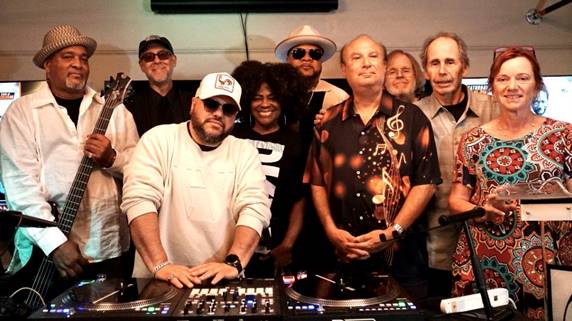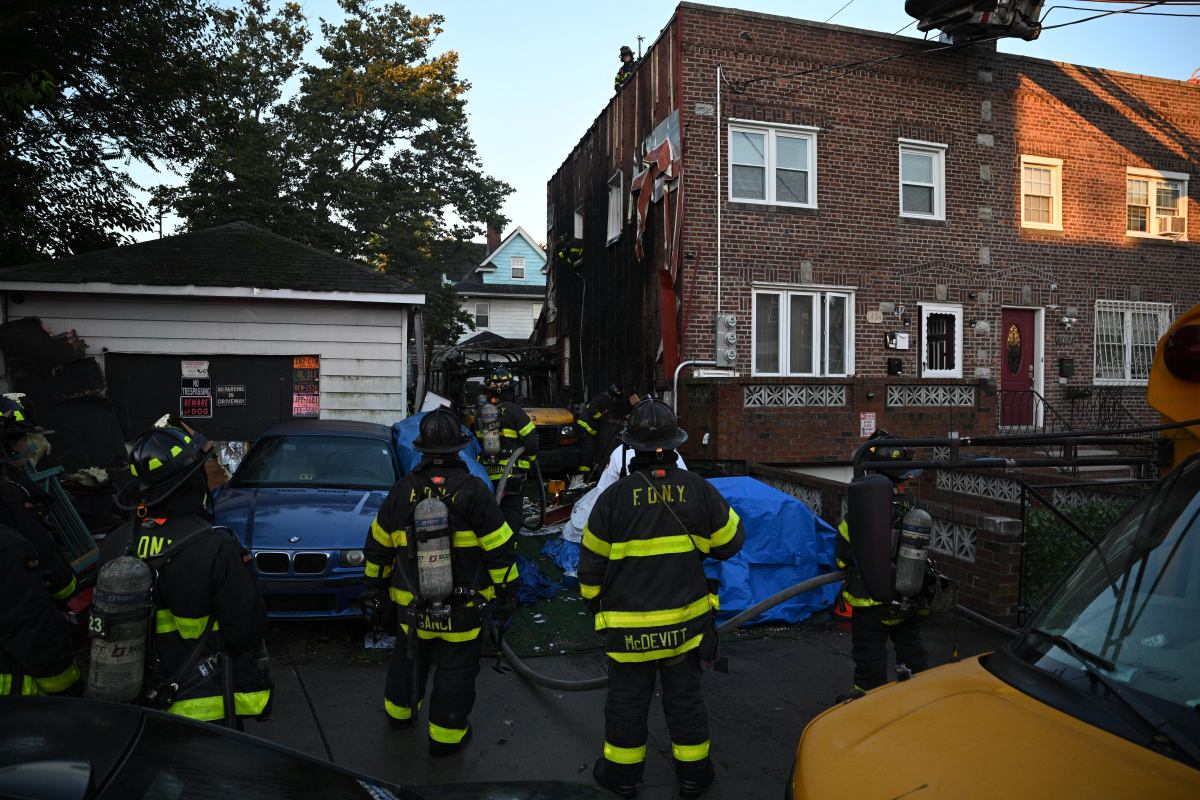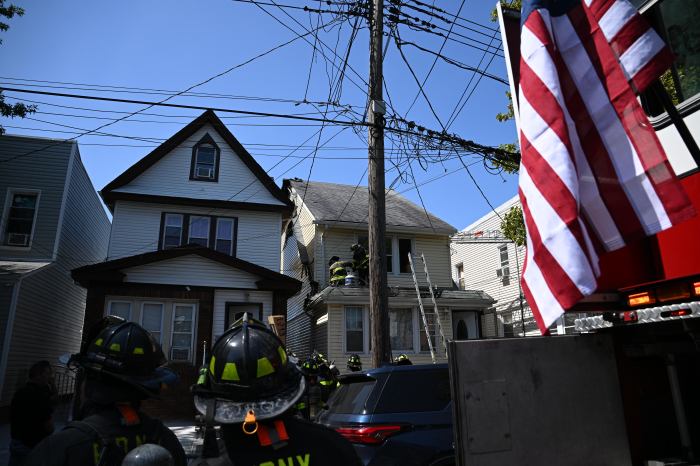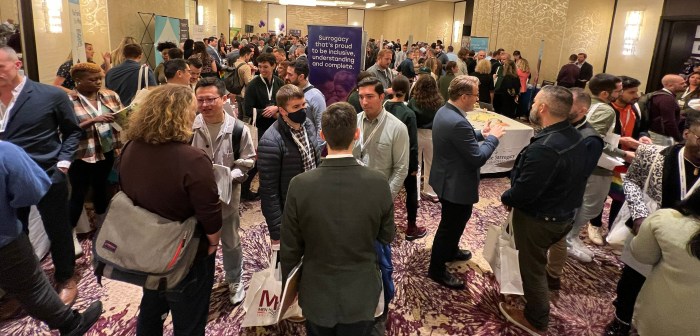By Sarah Ferguson
Lady Bunny at the Capitale nightclub was the scene of the lavish affair.
It was a decidedly upscale celebration of Downtown counterculture. On Monday night, more than 500 guests swamped the grand ballroom of Capitale — a Beaux Arts events venue located in the old Bowery Savings Bank on Bowery and Grand — to attend the Federation of East Village Artists’ first annual Pantheon gala.
The purpose was to raise big bucks for FEVA’s plan to create a Museum of the Counterculture, while inducting four pioneering artists into the museum’s Pantheon of famous bohemians: Ellen Stewart, who founded the La MaMa theater company; Jonas Mekas, who created Anthology Film Archives; Miguel Algarin of the Nuyorican Poets Café; and Tuli Kupferberg, the irreverent Beatnik and lyricist for ’60s-era rock band The Fugs.
Admittedly, the soiree was a bit swanky for a scene that always thumbed its nose at the elitism of the Uptown art world and all those Brooke Astor charity balls.
Milling inside Capitale’s palatial front hall for the opening silent auction, locals like Penny Arcade, who used to boast of being the “slum goddess of the Lower East Side,” sipped cocktails and sampled caviar alongside patrons like art world star Matthew Barney, who served as co-chairperson of the gala, accompanied by his girlfriend Bjork. Other heavy-hitting supporters included actors Luis Guzman and Kathleen Turner, who came by to introduce Ellen Stewart, but instead let Mireille Enos, her co-star in “Who’s Afraid of Virginia Woolf?,” do the talking, since Turner had lost her voice.
“I’ve sort of reconciled myself to the contradiction,” shrugged Steve Englander, administrative director of the adamantly downscale arts collective ABC No Rio, which was also honored by FEVA for its 25-year legacy in the nabe. “It’s a huge undertaking to create a museum. So if you start from the premise that it’s important to collect all these artifacts to make sure that what was created here over the last 30 to 40 years is not lost to the winds, then you’re going to have to take on benefits like this,” he added while snagging another skewer of chicken satay from one of the black-clad waiters ferrying silver platters amid the boisterous fray.
There was V.I.P. seating for patrons who gave up to $10,000 to support the effort, and a dinner featuring grilled salmon with tomato roulade, braised asparagus and an exquisite chocolate crème brulee.
But both the presenters of the awards and the honorees did their best to keep it real. Emcee Jonathan Ames led the crowd in a group “howl” in honor of patron saint Allen Ginsberg. Writer and fellow Fug,13 Ed Sanders followed that with a sung tribute to Ginsberg played on a three-string “strum-stick,” while Miguel Algarin gave his acceptance speech in the form of one of the Nuyorican’s signature Boricuan chants.
And Jonas Mekas, who was introduced as both a survivor of Nazi labor camps and a godfather of avant-garde film, questioned the very notion of creating a museum of countercultural “immortals.”
“My feeling is it’s not good to be too serious,” said the 81-year-old, in an acceptance speech that sounded more like an expressionist poem. “It’s not good to create serious institutions. Life goes on, life is free and unpredictable and beautiful. What is culture? What is counterculture? All the poets, all the visionaries, all the saints and scientists — all those who did everything that humans would become something else…. Something more beautiful. Something more subtle. That is what culture is,” he said taking his plaque, which featured a portrait of him by local artist James Romberger.
Indeed, more than any particular “icon” or character, it is really the collective history of the East Village that FEVA’s gala sought to honor.
Ellen Stewart talked about meeting Ginsberg in the Kasbah in Morocco. “He told me he was going to help me,” she said of her plans to start La MaMa in 1961. “And Ed Sanders gave me a lecture on what The Fugs was, because I didn’t know what that was,” she laughed.
Similarly, Penny Arcade spoke of listening to the Fugs when she was a teenager in a Catholic reform school in Connecticut in the late ’60s — “back when having a Fugs record was highest proof of cool you could have” — or hanging around Ed Sanders’ Peace Eye book store on E. 10th St. and the Psychedelicatessen when she hit town as a young rebel ready to make the scene.
“Bohemia has always been about one’s lineage, the pride of one’s influences,” said Arcade, who founded the Lower East Side Biography Project to help document the many unsung artists and politicos who made their mark on the neighborhood. “Downtown New York has always been a multigenerational scene, and in the HOWL Festival and FEVA, that is what we are trying desperately to preserve.”
Just how fragile that legacy is was underscored by the fact that the 81-year-old Kupferberg could not make the benefit because he is currently in a nursing home recovering from a bout of double pneumonia. Still, it was a revelation to hear his son Noah read his 1960 poem “Greenwich Village of My Dreams” — with its lines about “Love on the dole, Roosevelt not elected, Hoover under the 3rd Ave. El.” (The poem was first published in the Village Voice in 1960, back when the Voice still found space for poetry.)
They were words from another century, fast fleeting away. Hearing that poem, or Ed Sanders’s playful, sad paean to Ginsberg and the loss of time, underscored the central paradox of FEVA and the whole HOWL project. The bohemia that FEVA is looking to celebrate and preserve was founded on the premise of having free time thanks to cheap rent — something the East Village just doesn’t provide anymore.
With the real estate market skyrocketing, FEVA founder Phil Hartman acknowledges it’s tough to carve out space for a museum — let alone really communicate the East Village’s legacy to a new generation of more wealthy residents with perhaps far less time or “countercultural” inclinations. He is currently scouting out locations and hopes to open a temporary exhibition space within the next two years.
However ritzy and well-attended, Monday night’s gala was, Hartman says they will be lucky if they break even after expenses — though they did pull in more than $18,000 in art sales through the auction.
Nevertheless, he believes that more serious backing will materialize once recognition of the project’s value builds. “We have to look at this as a long-range thing,” he said. At the same time, he said, FEVA is working to “create new opportunities for the next generation of artists” — like partnering with the Lower Eastside Girls Club to provide 51 new artists’ studios when their building goes up on Avenue D.
“Part of the problem is the next generation of artists is not really here in the East Village,” Hartman acknowledges. “So we have to work harder to extend our tentacles a little father.”
WWW Downtown Express











